The IRF540N is an advanced HEXFET N-channel power mosfet, from International Rectifier. The device is extremely versatile with its current, voltage switching capabilities, and thus becomes ideal for numerous electronic applications.

The datasheet and pinout details of the device has been explained in the following article.
Main Features:
- Sophisticated, cutting-edge processing technology used.
- Extremely low resistance across load path. Flexible dv/dt plot.
- Operating temperature tolerance capacity as high as 175 degrees Celsius.
- Very fast switching capability.
- Fully resistant against avalanche or peak surge currents.
Pinout Image
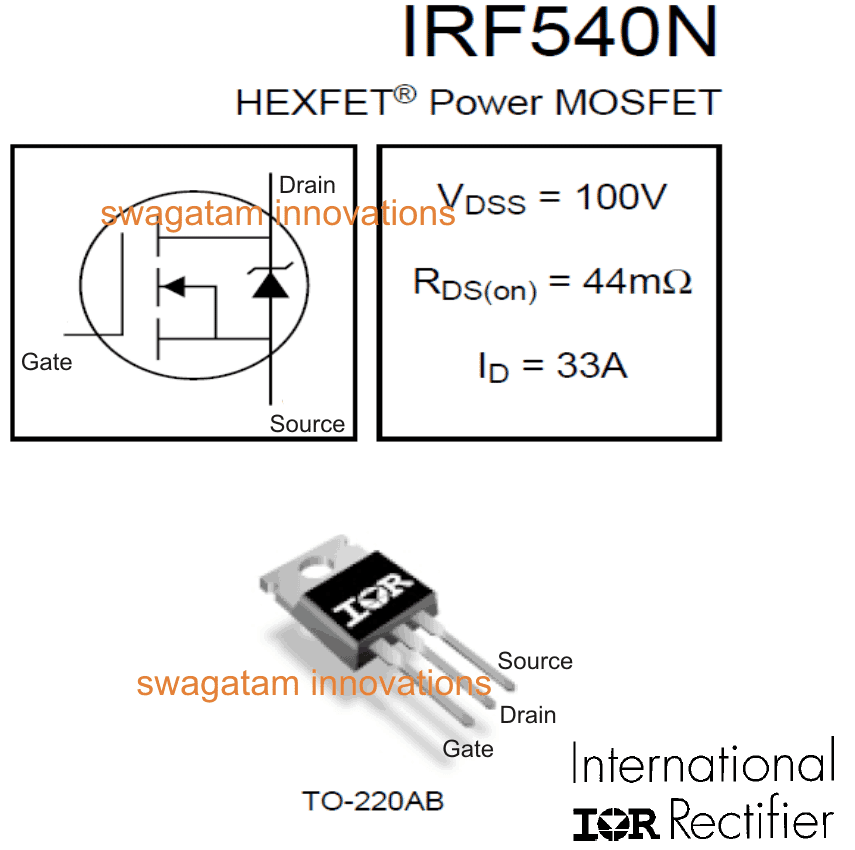
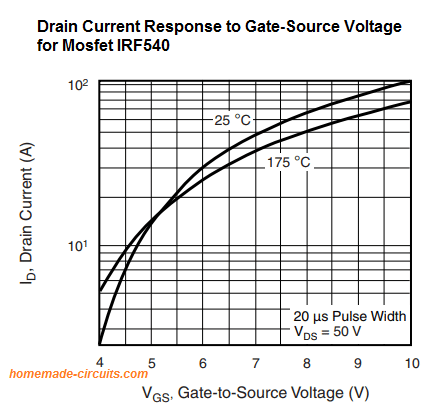
Maximum tolerable limits of IRF540N are stated as under:
ID = 33 Amps Max at 10V (VGS), It’s the maximum current handling capacity of the device across the drain to the source, via the load, with gate voltage at 10V, at normal temperatures (25 to 35 degrees Cel.)
IDM = 110 Amps Max, It’s the maximum current handling capacity of the device across the drain to the source, via the load, in a pulsed mode (NOT continuous).
PD = 130 Watts Max, The maximum power the FET can dissipate with and infinite (cool) heat sink
VGS = 10 Volts typical +/-20%. It’s the maximum trigger voltage that may be applied across the gate and the source for optimal performance.
V(BR)DSS= 100 volts, It’s the maximum voltage that may be applied across drain to source of the device.
Applications Areas
This device is best suited for high power DC switching applications, such as in high current SMPS power supplies, compact ferrite inverter circuits, iron core inverter circuits, buck and boost converters, power amplifiers, motor sped controllers, robotics etc.
How to Connect IRF540N MOSFET
It’s quite simple, and must be done as explained in the following points:
The source should be preferably connected to the ground or the negative line of the supply.
The drain should be connected to the positive terminal of the supply via the load which needs to be operated by the device.
Finally, the gate which is the trigger lead of the device should be connected to the trigger point of the circuit, this trigger input should be preferably a +5V supply from a CMOS logic source.
If the trigger input is not a logic source make sure the gate is permanently connected to ground via a high value resistor.
When the device is being used for switching inductive loads like a transformer or a motor, a flyback diode should be normally connected across the load, with the cathode of the diode connected to the positive side of the load.
However, the IRF540N has a built in avalanche protective diode, therefore typically an external diode may not be required; it may be incorporated in case you wish to provide extra safety to the device.
Application Circuits
Motor Control: All motor control applications require the power device to be rugged, high current, and high voltage rated, and also with a high speed switching. The IRF540 satisfies all these criteria and becomes perfectly suitable for all DC motor control designs, as depicted below:

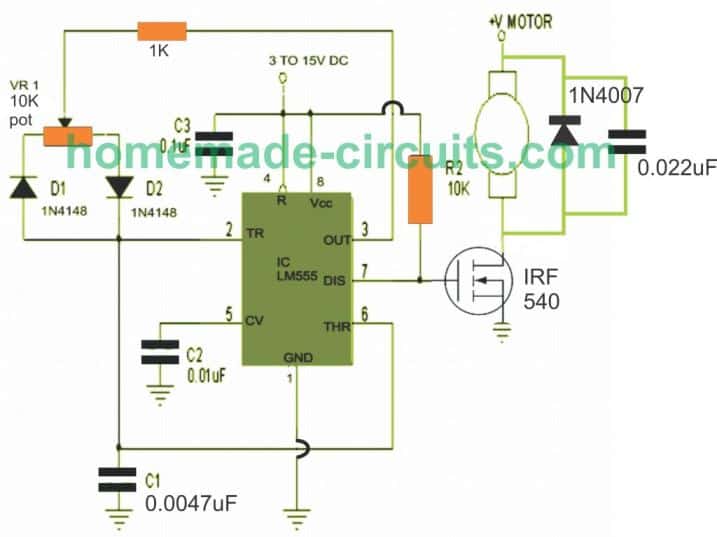
Buck Converter: Buck converter cannot work with devices rated with ordinary voltage, current and switching levels. The IRF540 as we have discussed in the above datasheet and features is equipped adequately to work under moderately high voltage, high current and outstanding switching speeds, which makes it a perfect candidate for all buck boost switching applications.

Power Inverter: IRF540 are rated with massive power which allows it to be ideally used for making power inverters as shown below. The complete code can e found in this artcile.
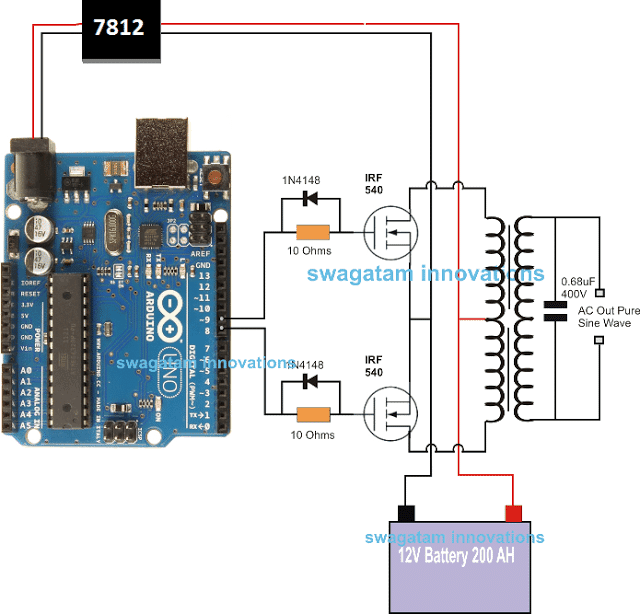
Zero Drop Solar Switch: Solar panels today are rated massively, and this calls for controller with substantial power handling capacity. The IRF540 become highly suitable for all high power solar controller applications simply due to its impressive power switching capabilities.
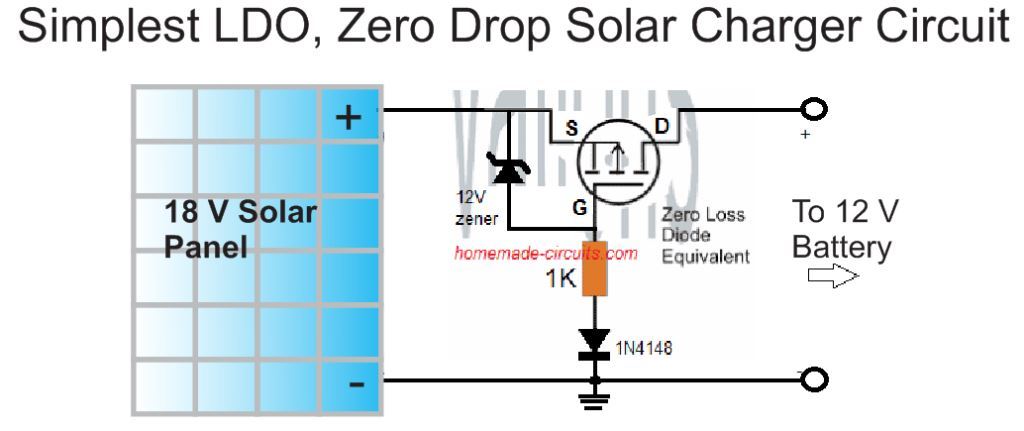
Corrections to the above explanations is welcome.

Have Questions? Please Comment below to Solve your Queries! Comments must be Related to the above Topic!!